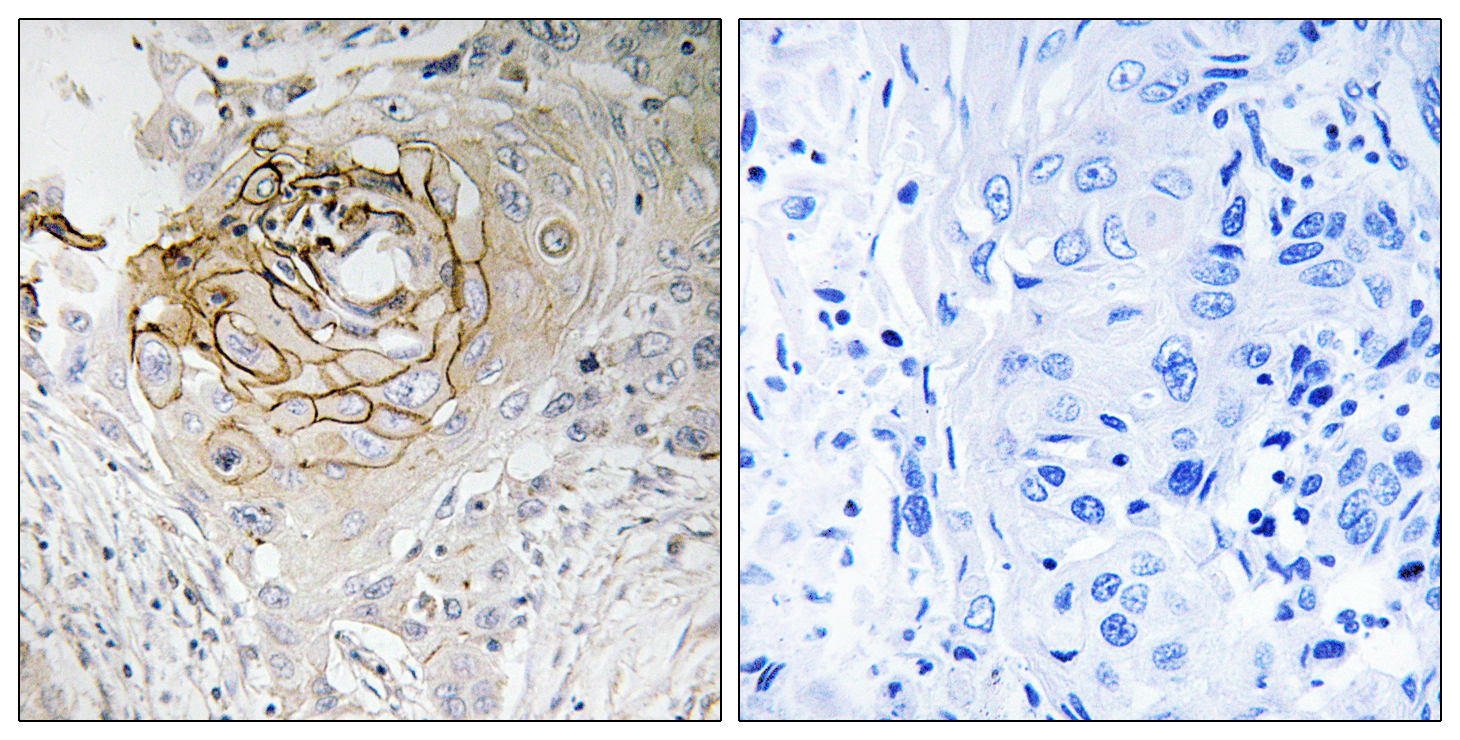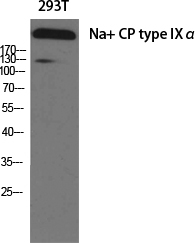产品名称
Na+ CP type IXα Rabbit Polyclonal Antibody
别名
SCN9A; NENA; Sodium channel protein type 9 subunit alpha; Neuroendocrine sodium channel; hNE-Na; Peripheral sodium channel 1; PN1; Sodium channel protein type IX subunit alpha; Voltage-gated sodium channel subunit alpha Nav1.7
蛋白名称
Sodium channel protein type 9 subunit alpha
存储缓冲液
Liquid in PBS containing 50% glycerol, 0.5% BSA and 0.02% New type preservative N.
Human Gene Link
http://www.ncbi.nlm.nih.gov/sites/entrez?db=gene&term=6335
Human Swissprot No.
Q15858
Human Swissprot Link
http://www.uniprot.org/uniprotkb/Q15858/entry
Mouse Swissprot No.
Q62205
Mouse Swissprot Link
http://www.uniprot.org/uniprot/Q62205
Rat Gene Link
http://www.ncbi.nlm.nih.gov/sites/entrez?db=gene&term=78956
Rat Swissprot Link
http://www.uniprot.org/uniprot/O08562
免疫原
The antiserum was produced against synthesized peptide derived from human SCN9A. AA range:651-700
特异性
Na+ CP type IXα Polyclonal Antibody detects endogenous levels of Na+ CP type IXα protein.
稀释度
WB 1:500 - 1:2000. IHC 1:100 - 1:300. ELISA: 1:40000.. IF 1:50-200
宿主
Polyclonal, Rabbit,IgG
背景介绍
This gene encodes a voltage-gated sodium channel which plays a significant role in nociception signaling. Mutations in this gene have been associated with primary erythermalgia, channelopathy-associated insensitivity to pain, and paroxysmal extreme pain disorder. [provided by RefSeq, Aug 2009],
组织表达
Expressed strongly in dorsal root ganglion, with only minor levels elsewhere in the body, smooth muscle cells, MTC cell line and C-cell carcinoma. Also expressed in vagus nerves within the head and neck region (PubMed:31647222). Isoform 1 is expressed preferentially in the central and peripheral nervous system. Isoform 2 is expressed preferentially in the dorsal root ganglion.
细胞定位
Cell membrane ; Multi-pass membrane protein . Cell projection, neuron projection . In neurite terminals. .
功能
disease:Defects in SCN9A are a cause of paroxysmal extreme pain disorder (PEPD) [MIM:167400]; previously known as familial rectal pain (FRP). PEPD is an autosomal dominant paroxysmal disorder of pain and autonomic dysfunction. The distinctive features are paroxysmal episodes of burning pain in the rectal, ocular, and mandibular areas accompanied by autonomic manifestations such as skin flushing.,disease:Defects in SCN9A are the cause of autosomal recessive congenital indifference to pain [MIM:243000]; also known as channelopathy-associated insensitivity to pain. Affected individuals have a congenital inability to perceive any form of pain, in any part of the body. All other sensory modalities are preserved and the peripheral and central nervous systems are apparently intact. Patients perceive the sensations of touch, warm and cold temperature, proprioception, tickle and pressure, but not painful stimuli. There is no evidence of a motor or sensory neuropathy, either axonal or demyelinating.,disease:Defects in SCN9A are the cause of primary erythermalgia [MIM:133020]. It is an autosomal dominant disease characterized by recurrent episodes of severe pain associated with redness and warmth in the feet or hands.,domain:The sequence contains 4 internal repeats, each with 5 hydrophobic segments (S1,S2,S3,S5,S6) and one positively charged segment (S4). Segments S4 are probably the voltage-sensors and are characterized by a series of positively charged amino acids at every third position.,function:Mediates the voltage-dependent sodium ion permeability of excitable membranes. Assuming opened or closed conformations in response to the voltage difference across the membrane, the protein forms a sodium-selective channel through which Na(+) ions may pass in accordance with their electrochemical gradient. It is a tetrodotoxin-sensitive Na(+) channel isoform. Plays a role in pain mechanisms, especially in the development of inflammatory pain.,online information:SCN9A entry,online information:Silent pain - Issue 102 of February 2009,PTM:Ubiquitinated by NEDD4L; which may promote its endocytosis. Does not seem to be ubiquitinated by NEDD4.,similarity:Belongs to the sodium channel family.,similarity:Contains 1 IQ domain.,subcellular location:In neurite terminals.,subunit:The sodium channel consists of a large polypeptide and 2-3 smaller ones. This sequence represents a large polypeptide. Interacts with NEDD4 and NEDD4L.,tissue specificity:Expressed strongly in dorsal root ganglion, with only minor levels elsewhere in the body, smooth muscle cells, MTC cell line and C-cell carcinoma. Isoform 1 is expressed preferentially in the central and peripheral nervous system while isoform 2 is expressed preferentially in the dorsal root ganglion.,
纯化
The antibody was affinity-purified from rabbit antiserum by affinity-chromatography using epitope-specific immunogen.


